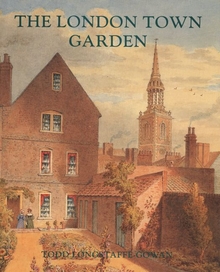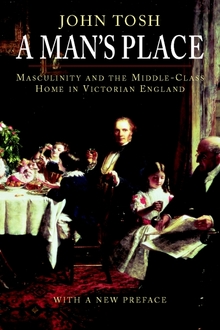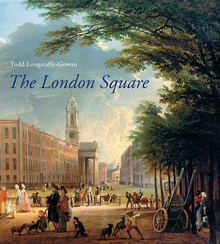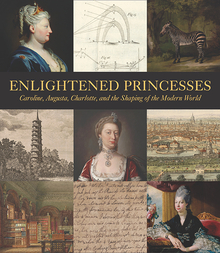The London Town Garden, 1700–1840
WARNING
You are viewing an older version of the Yalebooks website. Please visit out new website with more updated information and a better user experience: https://www.yalebooks.com
Todd Longstaffe-Gowan
Much has been written about London’s terraced houses with their simple dignity, their economical use of space, and their sense of comfort and human scale. Yet the small gardens that lie before or behind the houses in this great city have until now been overlooked. In this groundbreaking account of the development of the private garden in London, eminent garden historian Todd Longstaffe-Gowan provides a delightful remedy to the oversight. Recognizing the contribution of modest domestic gardens to the texture of eighteenth- and early nineteenth-century London, Longstaffe-Gowan explores in full detail the small gardens, their owners, and their significance to the development of the metropolis. Some two hundred illustrations enhance this rich and fascinating discussion.
Town gardening was conventionally maligned as a trifling pursuit conducted within inhospitable and infertile enclosures. This view changed during the eighteenth century as middle class Londoners found in gardening activities an outlet for personal enjoyment and expression. This book describes how gardening affected the lives of many, becoming part of the ritual of the daily round and gratifying material aspirations.
Town gardening was conventionally maligned as a trifling pursuit conducted within inhospitable and infertile enclosures. This view changed during the eighteenth century as middle class Londoners found in gardening activities an outlet for personal enjoyment and expression. This book describes how gardening affected the lives of many, becoming part of the ritual of the daily round and gratifying material aspirations.
Todd Longstaffe-Gowan is a landscape architect in private practice in London. He is gardens adviser to Hampton Court Palace and has worked as a landscape architect on the conservation of historic parks and gardens and the design of new landscapes in Britain, on the Continent, and in the West Indies.
“Longstaffe-Gowan [fills] a major gap in garden history studies with this book. . . . Lavishly illustrated with the fruits of extensive visual research--plans, sketches, paintings, engraved views, and maps--the book is enriched with the author’s thorough knowledge of contemporary social and literary history. . . . A feast for the garden historian and a treat for the general reader.”—Choice
“Beautifully presented and illustrated and far more than a coffee table book. . . . I would be very surprised if this was not the definitive history of London gardens and likely to remain so for many years.”—Leonard Schwartz, Journal of Urban History
“Beautifully presented and illustrated and far more than a coffee table book. . . . I would be very surprised if this was not the definitive history of London gardens and likely to remain so for many years.”—Leonard Schwartz, Journal of Urban History
“Making prodigious use of maps, prints and drawings of the period, Longstaffe-Gowan, who is a landscape architect, creates a fascinating portrait of the slender, often brick-walled gardens that lay, and still lie, behind London’s town-houses.”—Verlyn Klinkenborg, New York Times Book Review
“[M]agnificent. . . . An absolute must.”—Lida Dicaire, Landscape Architecture
“Eminently readable. . . . The Town Garden will be welcomed by all those interested in garden and architectural history and conservation, historical geography, and urban and social histories. . . . This book will appeal to present-day town gardeners of both the green-fingered and armchair varieties, and to everyone interested in London.”—Rebecca Preston, Garden History
“Redolent with scholarship, Todd Longstaffe-Gowan’s survey is informative and entertaining, delivering narrative, analysis and anecdote from London’s social and architectural histories as they intersected in the new urban garden spaces of the 18th and 19th centuries.”—The Economist
“What especially struck me is the range, depth, and cultural interest of the details Longstaffe-Gowan has been able to bring together here. There is archaeology . . . there are also certain printed sources to be used . . . and then there are the many images of the gardens in prints, drawings, and paintings, many of which are nicely reproduced here.”—David Cast, Journal of the Society of Architectural Historians
“This is a book that should find a welcome place on the shelves of anyone who is engaged in the history of horticulture, either professionally or as keen amateurs.”—The Garden
“With this magnificent book, landscape architect and historian Todd Longstaffe-Gowan has gathered the ripened fruits of scholarship and sown the seeds of interest in an intriguing and most important chapter of English garden history. . . . The rich bounty of text and extensive illustration represent a harvest that has exacted from its author no fewer than 10 years of rigorous academic digging and editorial pruning. . . . An absolute must.”—Landscape Architecture
"Kudos to the author and his publisher, Yale University Press, for issuing a most compelling book of high production standards, evidencing solid scholarship, analytical thinking, and accessible writing. It ratchets up the standards for research and publication in garden history and is a model to which we all should aspire. May we see more volumes like this one."—Karen L. Jessup, Journal of the New England Garden Historical Society
“It will be read with pleasure even by those who may be disposed beforehand to think that the subject may not hold much interest. . . . It is a considerable contribution to modern garden history scholarship, reflecting current concerns, and there is no one who could have done the job better.”—Michael Symes, Albion
“Beautifully presented and illustrated and far more than a coffee table book. . . . I would be very surprised if this was not the definitive history of London gardens and likely to remain so for many years.”—Leonard Schwartz, Journal of Urban History
Named one of the finest books of 2001 by The Economist
ISBN: 9780300085389
Publication Date: April 10, 2001
Publication Date: April 10, 2001
304 pages, 8 1/2 x 10 1/2
200 b/w + 60 color illus.
200 b/w + 60 color illus.










